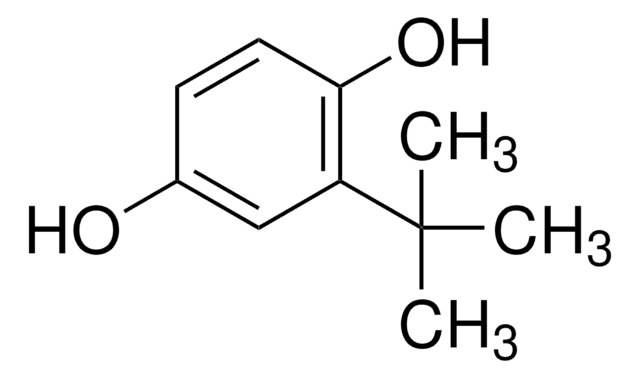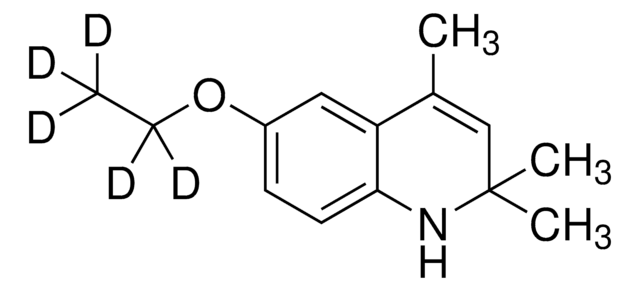Key Documents
78943
Butylated hydroxyanisole
analytical standard
Synonim(y):
Butylated hydroxyanisole, E320, 2(3)-t-Butyl-4-hydroxyanisole, 2(3)-t-Butylhydroquinone monomethyl ether, BHA
About This Item
Polecane produkty
Poziom jakości
klasa czystości
analytical standard
gęstość pary
6.2 (vs air)
Próba
≥99.0% (sum of isomers, GC)
temp. samozapłonu
599 °F
okres trwałości
limited shelf life, expiry date on the label
metody
HPLC: suitable
gas chromatography (GC): suitable
mp
58-60 °C (lit.)
Zastosowanie
cleaning products
cosmetics
food and beverages
personal care
format
neat
InChI
1S/C11H16O2/c1-11(2,3)9-7-8(13-4)5-6-10(9)12/h5-7,12H,1-4H3
Klucz InChI
MRBKEAMVRSLQPH-UHFFFAOYSA-N
Szukasz podobnych produktów? Odwiedź Przewodnik dotyczący porównywania produktów
Opis ogólny
Zastosowanie
- Food samples using square-wave voltammetry (SWV), further confirmed by high-performance liquid chromatography technique (HPLC) and capillary electrophoresis (CE) coupled with end-column amperometric detection.
- Cosmetics using fluorescence spectroscopy with second-order calibration, further confirmed by HPLC technique.
Zwroty wskazujące rodzaj zagrożenia
Zwroty wskazujące środki ostrożności
Klasyfikacja zagrożeń
Aquatic Chronic 2
Kod klasy składowania
11 - Combustible Solids
Klasa zagrożenia wodnego (WGK)
WGK 2
Temperatura zapłonu (°F)
241.9 °F - Pensky-Martens closed cup
Temperatura zapłonu (°C)
116.6 °C - Pensky-Martens closed cup
Wybierz jedną z najnowszych wersji:
Masz już ten produkt?
Dokumenty związane z niedawno zakupionymi produktami zostały zamieszczone w Bibliotece dokumentów.
Klienci oglądali również te produkty
Nasz zespół naukowców ma doświadczenie we wszystkich obszarach badań, w tym w naukach przyrodniczych, materiałoznawstwie, syntezie chemicznej, chromatografii, analityce i wielu innych dziedzinach.
Skontaktuj się z zespołem ds. pomocy technicznej






